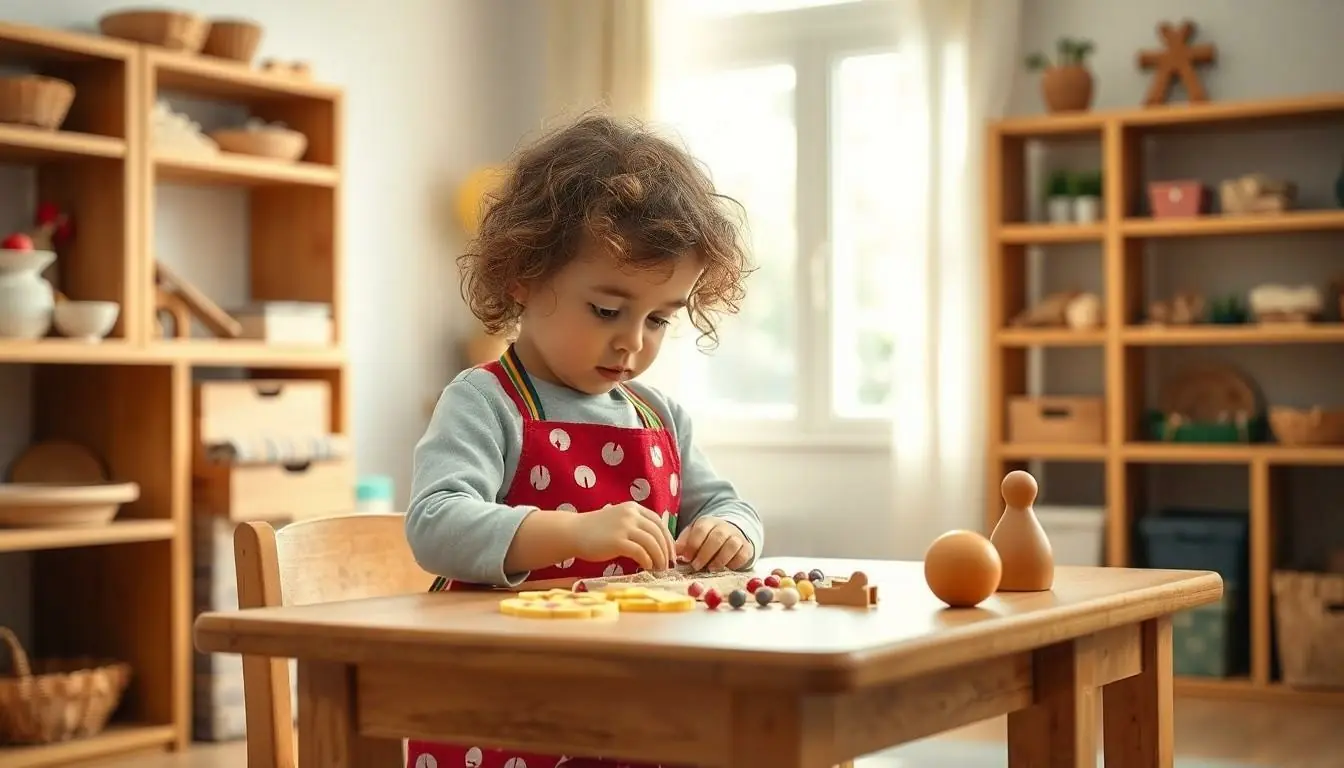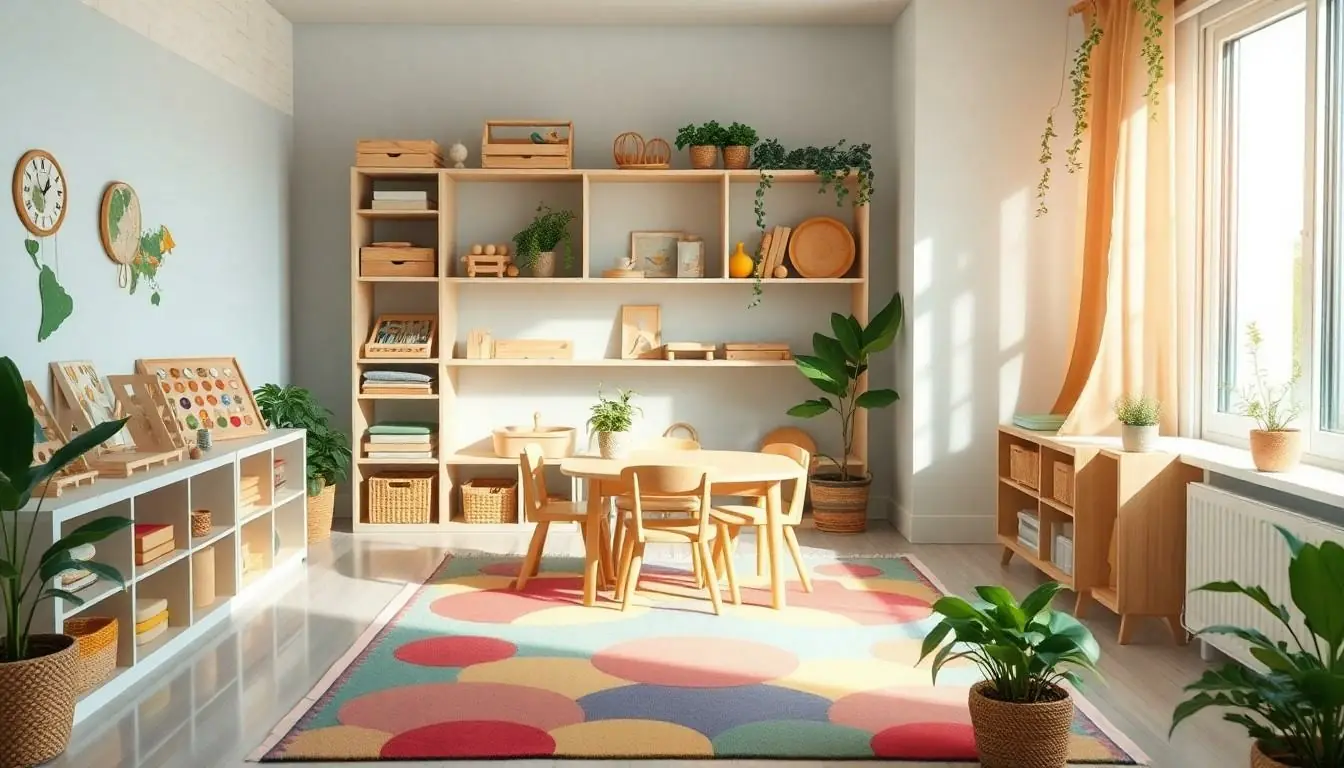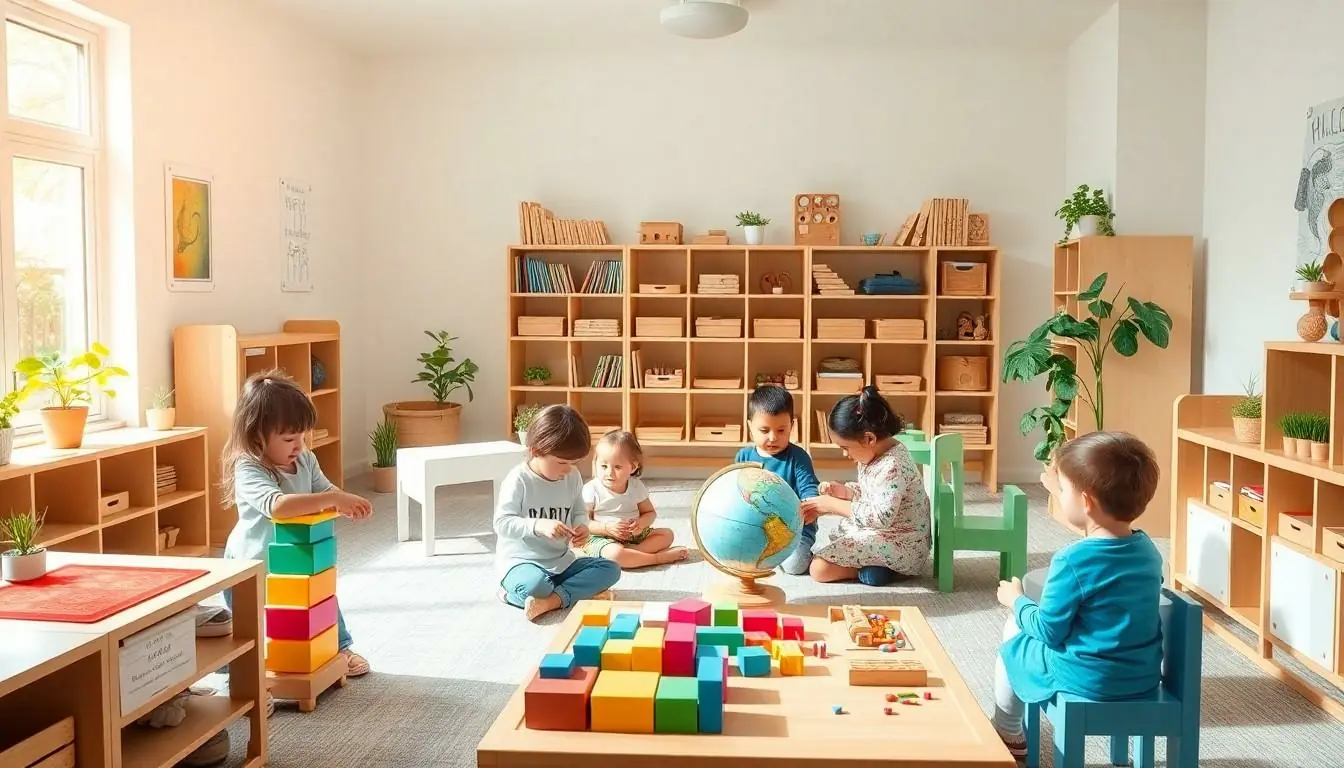Creating a Montessori environment at home doesn’t require transforming your living space into a mini-school or breaking the bank. It’s about fostering independence, curiosity and natural learning through simple yet purposeful changes to your child’s everyday surroundings.
Parents looking to embrace Montessori principles at home often feel overwhelmed by the endless Pinterest boards and Instagram-perfect playrooms. But here’s the truth – implementing Montessori methods is less about buying expensive wooden toys and more about understanding your child’s developmental needs. With some thoughtful preparation and organization, any home can become a nurturing space that encourages exploration, concentration and self-directed learning.
Table of Contents
ToggleUnderstanding the Montessori Method
The Montessori method embraces a child-centered educational approach developed by Dr. Maria Montessori in the early 1900s. This scientifically-based methodology focuses on following each child’s natural developmental rhythm while fostering independence through prepared environments.
Core Principles and Philosophy
The Montessori method operates on five fundamental principles that guide child development. Children possess an innate ability to absorb knowledge from their environment during sensitive periods of growth. Freedom of movement enables children to explore their surroundings independently within appropriate boundaries. Mixed-age groupings create opportunities for peer learning where older children teach younger ones. The prepared environment contains specific materials designed to isolate skills while promoting concentration. Order in the physical space helps children develop internal organization mental patterns through external structure.
Benefits of Montessori Learning at Home
Montessori learning at home creates lasting positive impacts on child development. Children develop strong executive function skills through practical life activities like food preparation cleaning tasks. Independent work time builds longer attention spans concentration abilities. Self-correcting materials enable children to recognize identify their own mistakes without adult intervention. Multi-sensory learning experiences enhance memory retention through physical manipulation of objects. Children gain confidence by mastering tasks at their own pace without external pressure. The home environment allows individualized learning paths based on each child’s interests developmental readiness.
Creating a Montessori-Friendly Home Environment
A Montessori-friendly home environment supports children’s independence through thoughtful space organization and carefully selected materials. The transformation focuses on making the environment accessible and engaging for children while maintaining order and purpose.
Organizing Child-Accessible Spaces
Child-accessible spaces incorporate low shelves at 24-30 inches height for easy reach. Open storage solutions display materials clearly with designated spots for each item. Movement areas feature child-sized furniture including tables at 18-20 inches height chairs proportional to children’s bodies. Learning zones separate into distinct areas: practical life care language mathematics sensorial activities art. Kitchen spaces include a dedicated low cabinet for child-accessible dishes utensils snacks. Bathroom modifications incorporate step stools hooks at child height low towel bars. Clear visual boundaries mark each activity area using rugs mats or floor tape to define workspaces. Labels with pictures words help children identify material locations independently.
Choosing Appropriate Materials and Toys
Montessori materials focus on developing specific skills through hands-on exploration. Essential items include practical life tools like child-sized brooms dustpans watering cans. Sensorial materials incorporate wooden puzzles shape sorters texture boards sorting activities. Language materials feature phonetic objects miniature items matching cards. Mathematical concepts use concrete materials like number rods counting beads geometric shapes. Art supplies include pencils watercolors scissors clay modeling tools. Natural materials take precedence over plastic: wooden toys cotton fabrics metal utensils. Rotating materials every 4-6 weeks maintains interest prevents overstimulation. Single-purpose items encourage focused attention skill mastery exploration. Quality materials demonstrate clear purposes realistic representations durable construction.
Essential Montessori Activities for Different Age Groups
Montessori activities follow distinct developmental stages with materials tailored to each child’s sensitive periods. These age-appropriate activities support cognitive development social skills motor abilities.
Activities for Toddlers (Ages 1-3)
Toddlers thrive on practical life activities that develop fine motor skills coordination. Examples include:
- Pouring exercises with rice beans or water into containers
- Threading large wooden beads onto strings
- Transferring objects using tongs spoons or tweezers
- Self-care tasks like washing hands dressing or putting on shoes
- Simple puzzles with knobs for grip development
- Sensory bins filled with natural materials like sand pasta or leaves
- Language cards featuring real objects from the child’s environment
- Music activities with simple instruments tambourines bells
Activities for Preschoolers (Ages 3-6)
- Number rods counting games with concrete materials
- Sandpaper letters for phonetic awareness tactile learning
- Color tablet activities for visual discrimination
- Practical life stations for food preparation table setting
- Geography puzzles maps for spatial awareness
- Science experiments with basic concepts like sink float
- Art activities using various mediums tools techniques
- Building exercises with pink tower brown stairs
- Language activities with moveable alphabet cards
- Sensorial activities using binomial trinomial cubes
Incorporating Practical Life Skills
Practical life activities form the foundation of Montessori education at home. These activities help children develop independence, concentration, coordination and a sense of order through everyday tasks.
Kitchen and Food Preparation
The kitchen offers abundant opportunities for practical life skill development. Children learn food preparation basics through child-sized tools like small pitchers for pouring water, vegetable peelers for carrots and miniature cutting boards for slicing soft fruits. A learning tower or step stool provides safe access to counter heights. Setting up a dedicated snack station with portioned healthy options in clear containers enables independent food choices. Kids practice fine motor skills by spreading butter, mixing ingredients and using tongs to transfer items. A designated drawer with appropriate utensils and cleaning supplies encourages participation in meal preparation, serving and cleanup tasks.
Self-Care and Independence
Creating accessible spaces for self-care routines builds confidence and autonomy. A bathroom stool, low towel hooks and organized hygiene supplies allow children to wash hands, brush teeth and groom independently. Setting up a dressing station with clothes at child height promotes getting dressed without assistance. Labels on drawers help identify where items belong. Providing time to practice buttoning, zipping and shoe-tying develops fine motor coordination. A designated area for storing and caring for personal belongings teaches responsibility. Simple chores like making beds, folding clothes and putting away toys reinforce organizational skills and contribute to household care.
Maintaining the Montessori Approach
Consistent application of Montessori principles creates a sustainable learning environment at home. The key lies in establishing predictable routines while maintaining flexibility for each child’s unique developmental journey.
Daily Routines and Schedules
Montessori routines follow natural rhythms of concentration periods throughout the day. Morning blocks from 8-10 AM serve as prime learning windows when children engage in challenging activities like mathematics or language work. Mid-morning intervals focus on practical life skills such as food preparation or cleaning. Afternoons incorporate outdoor exploration periods lasting 45-60 minutes followed by quiet individual work time. A structured schedule includes:
- Fixed meal times with self-serve options
- Dedicated work cycles for focused learning
- Regular outdoor exploration periods
- Quiet time for reading or rest
- Clean-up sessions after activities
- Consistent bedtime routines
Parent’s Role as Guide
Parents function as observers first and facilitators second in the Montessori environment. Their primary responsibilities include:
- Preparing the environment with appropriate materials
- Demonstrating new activities once then stepping back
- Observing without interrupting concentrated work
- Redirecting disruptive behavior through positive alternatives
- Maintaining organized spaces accessible to children
- Recording developmental progress through observation notes
The adult refrains from praise or criticism, instead acknowledging effort through specific observations. This approach empowers children to develop internal motivation rather than seeking external validation.
Conclusion
Creating a Montessori environment at home empowers children to become confident independent learners. Parents don’t need expensive materials or perfect setups to implement these valuable principles successfully. The key lies in understanding their child’s developmental needs and preparing spaces that encourage exploration and growth.
By incorporating child-sized furniture organizing age-appropriate materials and establishing consistent routines families can nurture their children’s natural desire to learn. When children have the freedom to explore within prepared environments they develop essential life skills concentration and a deep love for learning.
Remember that every family’s Montessori journey is unique. Start small focus on what works for your child and celebrate the progress along the way. The lasting benefits of this child-centered approach will extend far beyond the early years.




